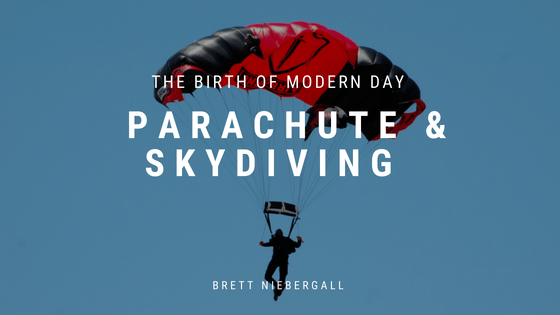The use of parachutes can be dated back to the 1100s in China. Back then, the Chinese were doing an early version of parachuting but used a device that was more like a parasol than the modern day parachute that we know of today. Leonardo Da Vinci created the first written concept of the modern-day parachute. A renowned renaissance artist and inventor, Da Vinci sketched the parachute to be a pyramid-shaped device made out of linen and wooden poles.
Although Da Vinci thought of the idea, the concept was not put into action until hundreds of years later by French scientist Louis-Sébastien Lenormand. In 1783, Lenormand fashioned together two umbrellas and jumped from a tree. After having a less than successful landing, Lenormand revisited the design and leaped from the tower of the Montpellier Observatory. With success of his new design, Lenormand hoped that the parachute would help others jump safely from heights, or even help others to escape from burning buildings.
While Da Vinci and Lenormand both contributed to the invention of the modern-day parachute, André-Jacques Garnerin was the first modern-day skydiver. In 1797, after taking away the rigid frame of previous prototypes, Garnerin jumped from a hot-air balloon about 3,200 feet high. In later years, he and his wife would jump from 8,000 feet and skydive over the English Channel
Garnerin popularized parachuting and soon skydiving made its transition from jumping from balloons to jumping from planes. With the invention of the planes, parachutes were used for emergency devices to survive a plane crash. Skydiving became immensely popular during World War II.
During World War II, paratroopers were introduced to war zones to drop people and supplies. As the war ended, paratroopers wanted to start jumping for fun, not just for military tactics. As parachuting grew in demand, more competitions emerged, making more and more people want to jump on the bandwagon.
As the popularity of the sport continued to rise, commercial skydiving centers and schools began to emerge across the globe. Competition sparked between fellow adventure-seekers after Joseph Kittinger, a U.S. Air Force pilot, was the first to set the world record for the highest parachute jump at 102,800 feet.
The birth of the modern-day parachute and skydiving has come a long way. Without the early prototypes and adventurers like André-Jacques Garnerin, modern skydiving would cease to exist. In the end, we have these past inventors and adventurers to thank for being the first willing to take the plunge.

